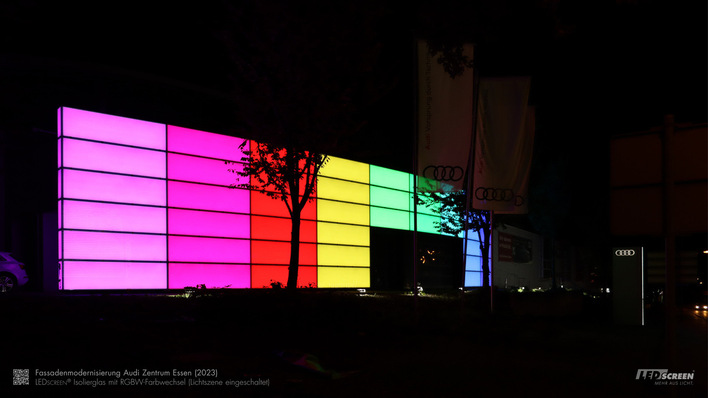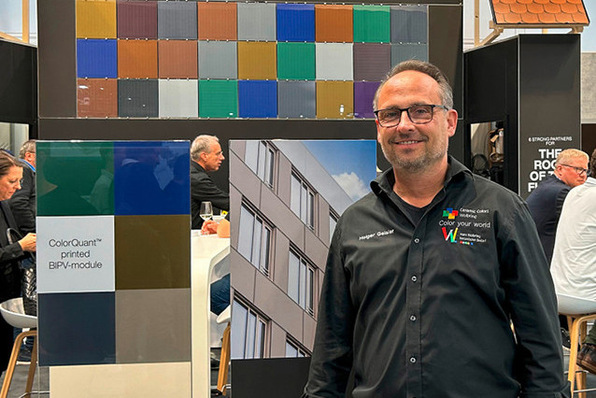‘In the search for a functional and aesthetic solution, we tested many options until we developed an effective method with the UniColor laser printing process,’ says Thomas Rainer, Head of Development at Hegla boraident.
The pattern is created by a laser that transfers ceramic particles from a transfer ribbon to the outside of the glass. This creates a uniform geometry of dots at a distance of 5 to 10 cm, which is barely perceptible to the human eye but achieves a 3-fold protective effect for birds:
Visual barrier: The distance between the dots is smaller than the width of the wingspan, making it appear impossible for birds to fly through.
Interruption of reflection: The dot pattern interrupts reflections from the surroundings, such as trees or bushes, which could attract birds. The coating in position 1 ensures that the protective dots remain recognisable regardless of the position of the sun and the reflections in the glass pane.
Changed UV reflection: The pattern visibly changes the UV reflection for birds and provides a further warning signal through additional light scattering.
See also: How bird protection glass works

Hegla
The opaque or semi-transparent print is scratch- and light-resistant as well as weatherproof, for an effectiveness of over 30 years.
The effectiveness of the bird protection glass was tested in 2022 through research by the American Bird Conservancy (ABC). Various glass structures and coatings were tested.
‘A special feature of the process is that the glass surface remains completely undamaged with our gentle process and the stress properties remain unaffected,’ emphasises laser specialist Rainer.
The laser processing of the glass or IG units is carried out stationary with the Laserbird processing system, which can also functionalise mobile radio-permeable or heatable glass in addition to bird protection. The parameters are stored in the app control system. Finishing takes place without set-up times.
Mobile laser solution for retrofitting bird protection glass
At glasstec, Hegla boraident is presenting the new BIRDfriend Mobile for the first time, which can retrofit glazing with bird protection. The flexibility of the system allows the imprint to be applied without having to remove or replace the glass panes.
The mobile printing device is simply attached to the facade and the pattern can then be applied. ‘Sustainability and bird protection are more relevant today than ever,’ says Thomas Rainer. ‘There is great interest in this type of solution, especially for public, commercial and prestigious buildings.’
Interview: How realistic are flight tunnel tests really, Ms Waddoup?
The option of retrofitting is also interesting for buildings where the original appearance is to be retained or where replacing the glazing is not economically or ecologically viable. The demand for bird protection has increased internationally and in some countries, such as Sweden, it is now regulated by law.
‘With our mobile solution, we support the subsequent functionalisation of existing glazing and are pleased to be able to provide an impetus for the protection of nature,’ says Thomas Rainer.
Editor's tip: Further details and information on laser processing can be found here.














